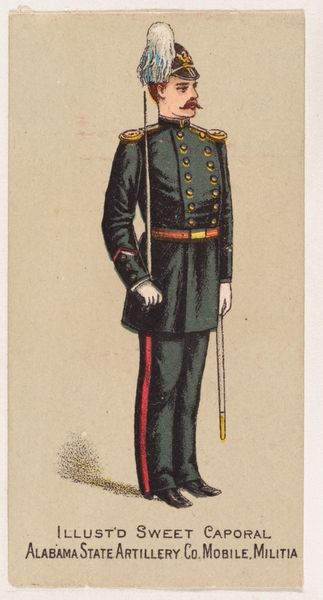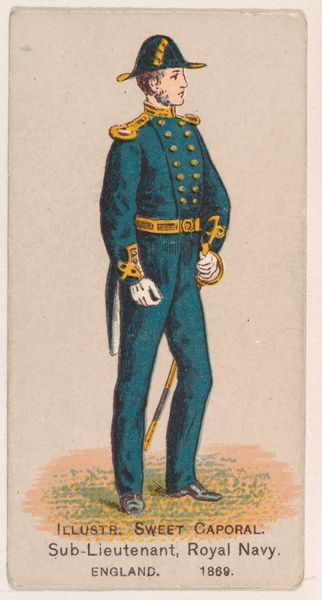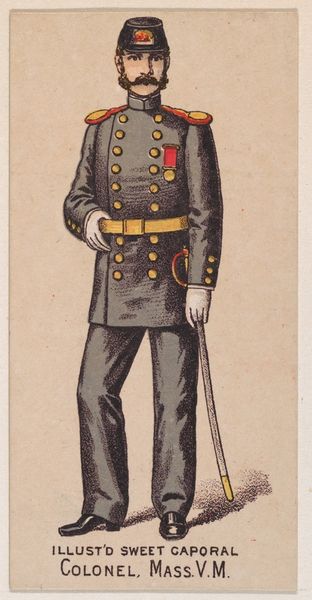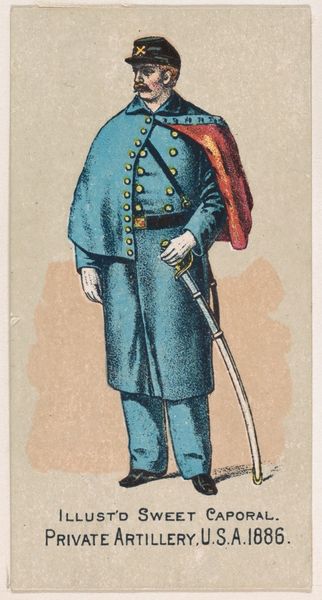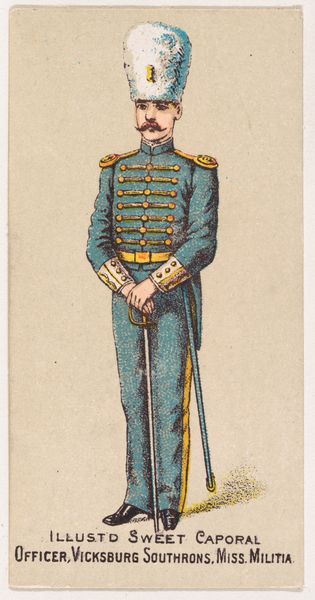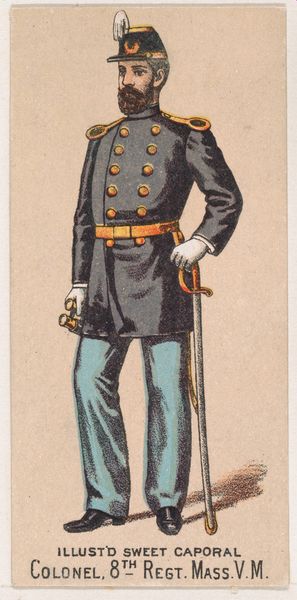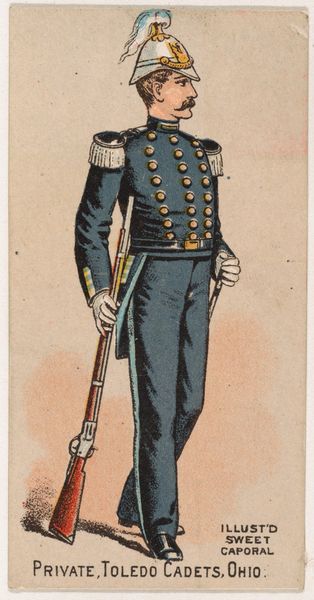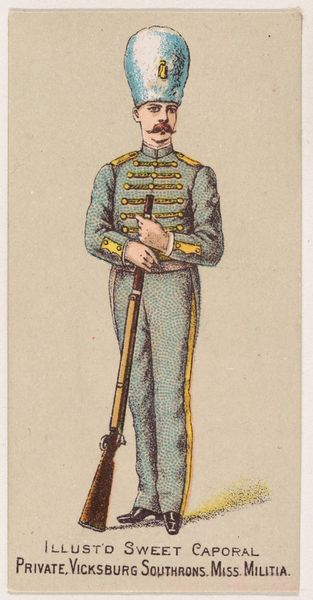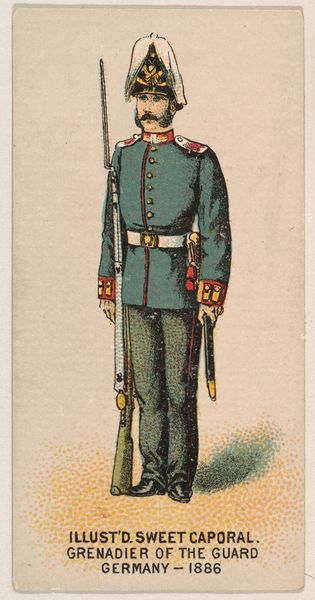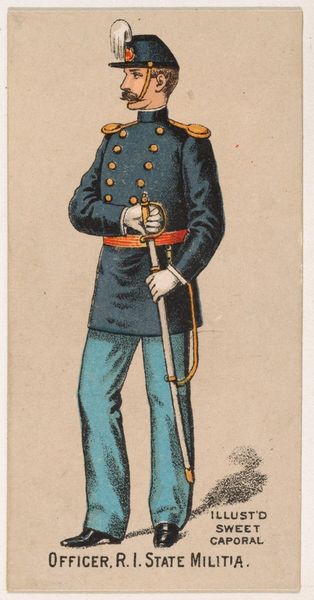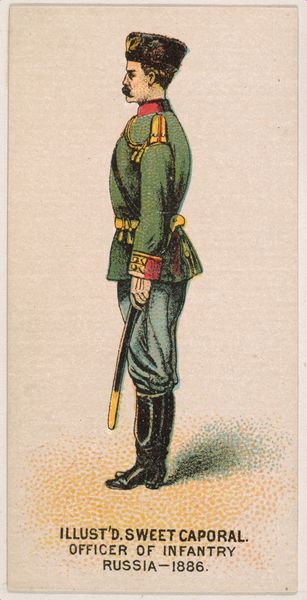
Bavarian Infantry, Germany, 1880, from the Military Series (N224) issued by Kinney Tobacco Company to promote Sweet Caporal Cigarettes 1888
0:00
0:00
drawing, coloured-pencil, print
#
portrait
#
drawing
#
coloured-pencil
# print
#
caricature
#
caricature
#
coloured pencil
#
genre-painting
Dimensions: Sheet: 2 3/4 × 1 1/2 in. (7 × 3.8 cm)
Copyright: Public Domain
Curator: Editor: So this little gem is titled "Bavarian Infantry, Germany, 1880," and it's from a series created around 1888 by Kinney Tobacco Company. It's a colored-pencil print, a military portrait. What strikes me is how formal, yet slightly cartoonish he seems. What catches your eye? Editor: What strikes me the most is its purpose, actually. It was promotional material for cigarettes. Knowing that shifts my understanding entirely. How do you interpret this work considering its intended purpose as advertisement? Curator: Precisely. We must consider the socio-economic conditions that allowed for the distribution of art within commodity culture. The image becomes less about the individual soldier and more about mass production, advertising, and even nationalism. It invites us to question: how does the act of producing these images mirror the industrial processes shaping society at that time? The paper, the colored pencils, and the printing process all play their part. What’s the relationship between industrial production, mass culture, and even militarization? Editor: So, it's about connecting the dots between consumerism and how industries—even industries promoting potentially harmful products—used these kinds of images. But the artistry, like the rendering of the uniform, seems to suggest… craft. Does that make sense? Curator: Absolutely. This challenges the established categories of 'high art' versus 'low art.' It shows that even commercial images involve artistry, handwork, and specific material choices that have meaning. So, is it mass produced imagery or an instance of craft? Perhaps both? Editor: It's a blend of both. Thanks, I didn't realize how much I was missing by just looking at it as an image, rather than as a commodity produced for a very specific reason. Curator: It’s vital to remember that all art exists within a material context. Even seemingly simple images like this reveal complex economic and social relations upon closer examination.
Comments
No comments
Be the first to comment and join the conversation on the ultimate creative platform.

